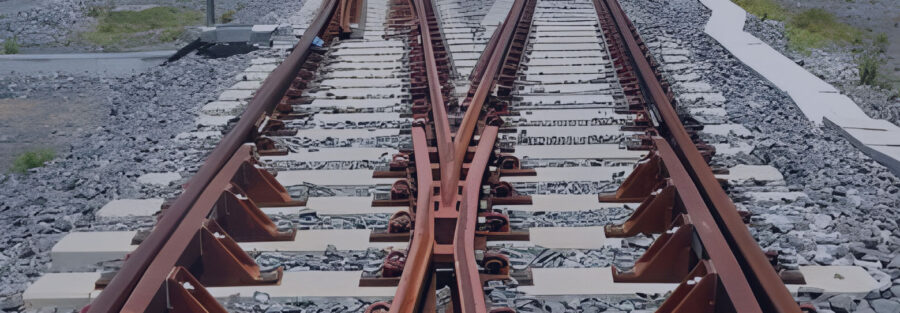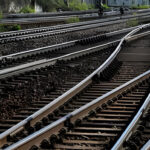Rail Track Switch, also known as turnouts or points, are essential components of railway infrastructure that enable trains to change tracks safely and efficiently. Over the years, advancements in technology have revolutionized track switch design and operation, leading to improved safety, reliability, and efficiency in railway operations. In this article, we will explore some of the latest advancements in track switch technology and their impact on the railway industry.
1. Rail Track Switch Electronic Interlocking Systems
One of the most significant advancements in track switch technology is the widespread adoption of electronic interlocking systems. Traditional mechanical interlocking systems, which use mechanical levers and rods to control track switches manually, are being replaced by electronic systems that use computers and digital control panels to manage train movements.
Electronic interlocking systems offer several advantages over their mechanical counterparts, including faster response times, greater flexibility, and enhanced safety features. These systems can automatically detect and prevent conflicting train movements, reducing the risk of accidents and collisions on the railway network. Additionally, electronic interlocking systems can be remotely monitored and controlled, allowing railway operators to manage track switches more efficiently and respond quickly to changing operational conditions.
2. Remote-Controlled Switches
Another significant advancement in track switch technology is the development of remote-controlled switches. Remote-controlled switches allow railway operators to operate track switches from a central control room or mobile device, eliminating the need for manual intervention at the trackside.
Remote-controlled switches offer several benefits, including improved operational efficiency, reduced maintenance costs, and enhanced safety. By eliminating the need for trackside personnel to manually operate switches, remote-controlled switches can minimize the risk of human error and ensure consistent switch operations across the railway network. Additionally, remote-controlled switches can be integrated with electronic interlocking systems to provide seamless control and monitoring of track switches from a centralized location.
3. Condition Monitoring Systems
Advancements in sensor technology have enabled the development of condition monitoring systems for track switches. These systems use sensors and data analytics to monitor the condition of track switches in real-time, detecting signs of wear, fatigue, or malfunction before they escalate into costly maintenance issues.
Condition monitoring systems can provide valuable insights into the health and performance of track switches, allowing railway operators to proactively schedule maintenance activities and minimize downtime. By detecting potential issues early, condition monitoring systems can help extend the service life of track switches and reduce maintenance costs over time.
4. Switch Heating Systems
In regions where snow and ice buildup pose a significant challenge to railway operations, switch heating systems have become an essential technology for ensuring reliable switch operation in cold weather conditions. Switch heating systems use electric or gas-powered heaters to prevent snow and ice buildup on switch points and frog components, ensuring smooth and reliable switch operation even in freezing temperatures.
Switch heating systems offer several benefits, including improved operational reliability, reduced delays, and enhanced safety. By preventing snow and ice buildup on track switches, these systems can minimize the risk of switch failures and ensure uninterrupted train movements during winter weather conditions. Additionally, switch heating systems can help reduce the need for manual snow clearing operations, saving time and labor costs for railway operators.
5. Predictive Maintenance Algorithms
Recent advancements in artificial intelligence and machine learning have enabled the development of predictive maintenance algorithms for track switches. These algorithms analyze data from sensors, maintenance records, and historical performance data to predict when track switches are likely to require maintenance or replacement.
Predictive maintenance algorithms can help railway operators optimize maintenance schedules, reduce downtime, and extend the service life of track switches. By identifying potential issues before they escalate into costly failures, these algorithms can help minimize disruptions to rail services and improve overall operational efficiency.
Additionally, predictive maintenance algorithms can help railway operators allocate resources more effectively and prioritize maintenance activities based on the criticality and condition of track switches.
In conclusion, advancements in track switch technology have transformed the way railway switches are designed, operated, and maintained. Electronic interlocking systems, remote-controlled switches, condition monitoring systems, switch heating systems, and predictive maintenance algorithms are just a few examples of the innovative technologies that are revolutionizing railway operations around the world. By embracing these advancements, railway operators can improve safety, reliability, and efficiency on their networks, ensuring smooth and uninterrupted train movements for passengers and freight alike.
Future Outlook
Looking ahead, innovation will continue to be a driving force in railway component manufacturing for Indian Railways. As the demand for efficient, reliable, and sustainable transportation grows, Indian Railways will remain committed to embracing new technologies, materials, and manufacturing techniques. By leveraging innovation, Indian Railways aims to enhance the safety, efficiency, and reliability of its railway infrastructure, contributing to the overall development and prosperity of the nation.
Innovations in railway component manufacturing are essential for meeting the evolving needs of Indian Railways’ extensive network. Through collaborations, technological advancements, and a focus on sustainability, Indian Railways and domestic manufacturers are driving innovation to ensure the seamless functioning and long-term viability of one of the world’s largest railway networks.
Post published by Veera Techno Trec. Stay tuned for more articles exploring the latest trends and developments in railway infrastructure for Indian Railways.



